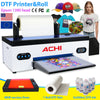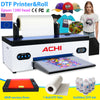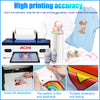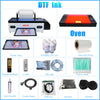How to Print on Fabric or Cloth by ACHI A3 Roll DTF Printer in 2025? A Complete Guide for Beginners & DIY Enthusiasts
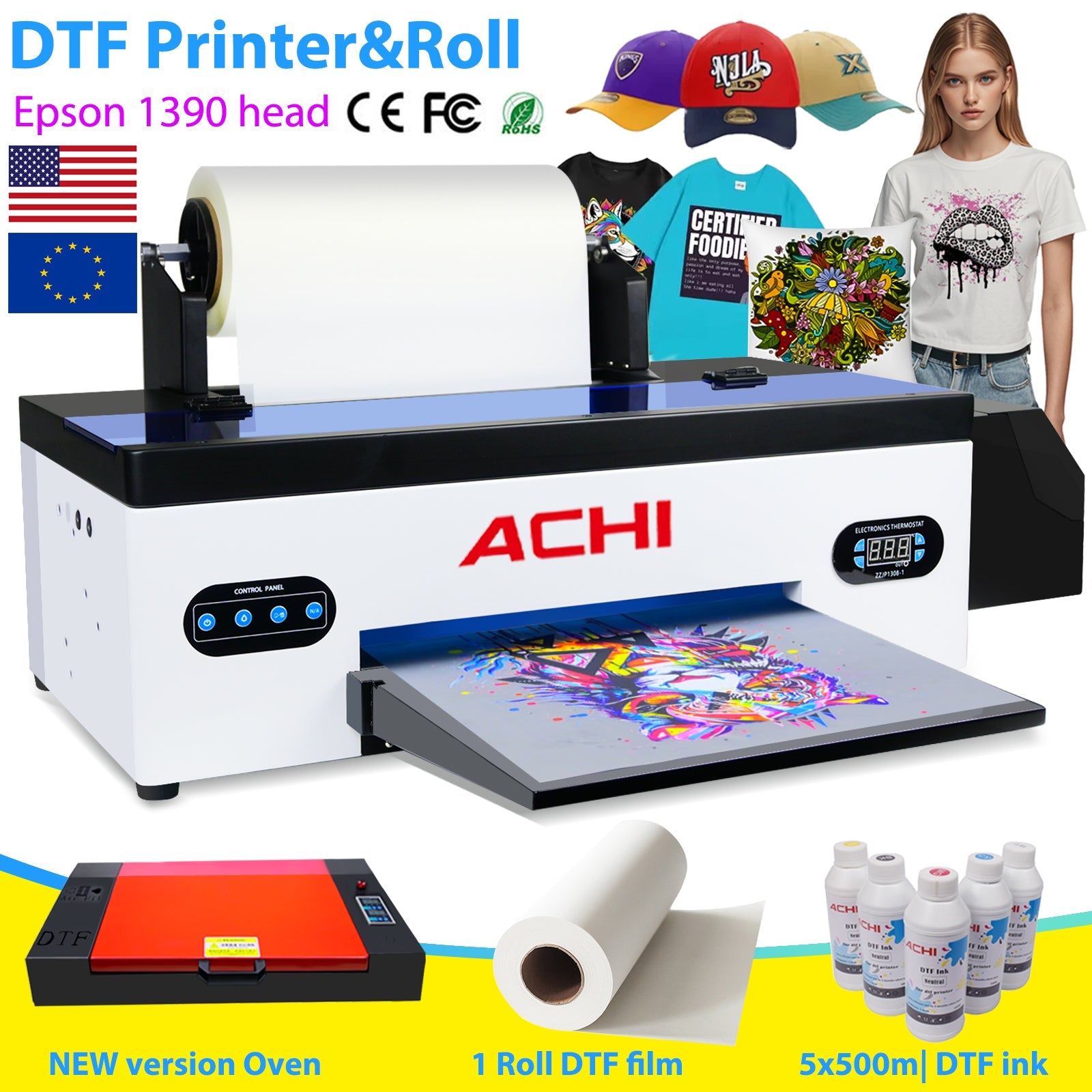
Dreaming of creating vibrant, durable custom t-shirts, tote bags, or unique fabric art at home?
Direct-to-Film (DTF) printing, especially with user-friendly roll-to-roll printers like the ACHI A3 Roll DTF Printer, is revolutionizing DIY apparel decoration in 2025.

This guide breaks down how to achieve stunning results on virtually any fabric, step-by-step.
Why DTF & Why the ACHI A3 Roll?
DTF involves printing your design onto a special PET film, applying adhesive powder, curing it, and then heat-pressing the entire film onto your fabric.
It beats older methods because:
- Works on ANY Fabric: Cotton, polyester, blends, denim, canvas, even leather – no pre-treatment needed!
- Vibrant Colors & Detail: Achieves bright whites and rich colors on dark fabrics, with excellent photographic detail.
- Soft Feel: When done correctly, the print feels soft and flexible on the fabric.
- Durability: Resistant to washing and cracking.
- ACHI A3 Roll DTF Printer Advantage: Its roll-to-roll system automates film feeding and powder shaking, making the process significantly smoother and more efficient than handling individual sheets, especially for larger batches or continuous designs.

The Heart of DTF: Understanding the Ink.
The magic lies in the ink, specifically formulated for DTF:
- PET-based Pigment Ink: This ink sits on top of the PET film (unlike DTG which soaks into fabric). Its key component is a unique resin binder (often polyurethane-based).
- The Adhesive Activation: During the hot-press transfer, this resin binder melts and activates, becoming the glue that permanently bonds the entire printed ink layer AND the adhesive powder to your fabric fibers.
- White Ink is Essential: For prints on dark fabrics, a white ink underbase is digitally printed first, creating an opaque background for colors to pop. The ACHI A3 printer software
- handles this white ink layering automatically based on your design.
- Adhesive Powder: Applied after printing wet ink, this powder sticks only to the ink. When melted during curing and pressing, it fuses with the ink's binder resin to create a strong, flexible adhesive layer.

Your ACHI A3 DTF Printing Workflow: Step-by-Step
- Design: Create or import your artwork using standard design software (Photoshop, Illustrator, free alternatives like GIMP/Inkscape). Ensure high resolution (300 DPI). Remember: For dark fabrics, design software automatically generates the white underbase layer – the ACHI A3 Roll DTF printer will print it.
-
Prepare the Printer:
- Load DTF-specific PET film rolls into the printer.
- Fill the printer with DTF-specific Pigment Inks (CMYK + White). Crucially, use only genuine or manufacturer-recommended inks compatible with the printer head and the DTF process. Never use standard inkjet inks!
-
Printing: Send your design to the software. The printer will:
- Automatically feed the PET film.
- Print the white underbase layer first (for dark fabrics).
- Print the color layers on top.
- Curing (Melting the Powder): Carefully transfer the powdered film to a curing oven or heat press. Heat it to around 110-120°C for 150-180 seconds. This melts the adhesive powder and partially activates the ink's binder resin, fusing them together onto the film. Ensure even heat distribution.
- Peeling Excess Powder (Optional but Recommended): After curing and cooling slightly, gently shake or tap the film to remove any loose, un-melted powder that didn't adhere to the ink. This keeps the edges clean.
-
Heat Pressing (Transferring to Fabric):
- Place your fabric on the heat press platen. Cotton/poly blends usually work best initially.
- Position the printed film INK-SIDE DOWN onto the fabric.
- Cover with a protective Teflon sheet or parchment paper.
- Press at approx. 160-170°C (320-340°F) with medium pressure for 12-15 seconds. This fully activates the binder resin and adhesive, bonding the ink layer to the fabric.
- Peeling (The Reveal!): Immediately after pressing (while still hot), peel the PET film away firmly and swiftly in one smooth motion. Your vibrant design is now on the fabric!
- Post-Press (For Durability - Highly Recommended): Place a protective sheet over the print and press again for 5-10 seconds at the same temperature without pressure (just closing the press). This "hot peel" step enhances wash durability.

Beginner Tips & Troubleshooting for ACHI A3 DTF Success
- Start Simple: Begin with light-colored cotton to learn the process before tackling dark fabrics or synthetics.
- Environment Matters: Control dust! Dust particles trapped under the film cause pinholes. Control humidity (ideally 40-60%) for optimal powder adhesion.
- Film & Powder Harmony: Ensure your powder particle size is compatible with your film's adhesive properties.
- Temperature & Time are Critical: Use an infrared thermometer to verify your oven/press temperatures. Experiment slightly with time/temp settings on scrap fabric for YOUR specific setup.
- White Ink & Printhead Care: Follow ACHI's guidelines for head cleaning/printer maintenance, especially crucial for white ink which can clog if left sitting. Use printer software routines regularly.
-
Common Issues:
- Cracking: Press temperature too high, pressing time too long, inadequate curing, or insufficient powder fusion.
- Poor Adhesion/Washout: Press temperature too low, pressing time too short, fabric not suitable (e.g., waterproof coatings), or insufficient powder coverage.
- Powder Scatter: Too much powder applied, powder not cured properly before pressing, or dusty environment.
- Color Shifting: Over-pressing (too hot/long) can affect some pigments.
-
Posted in
DTF printer
